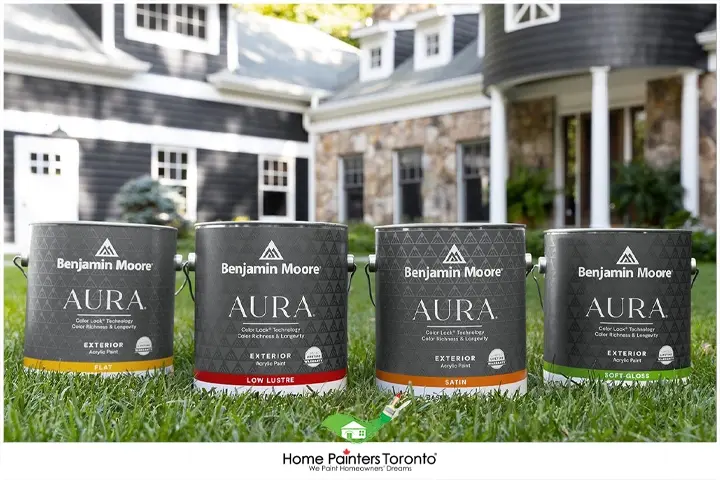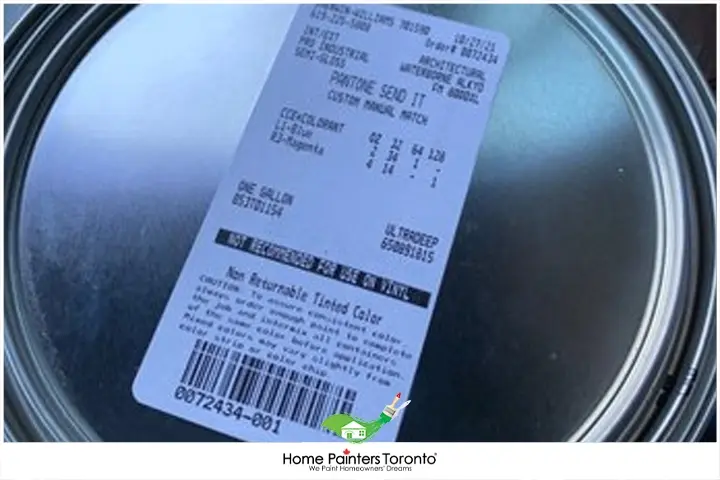
A common question that arises when it comes to paint storage is: can you store paint in the garage? Proper paint storage is crucial to ensure your paint remains in good condition and retains its optimal performance. This article delves into the factors you need to consider when storing paint and offers tips on how to effectively store paint in your garage.
More often than not, you will always store your paint for another time you’ll need it. People always tend to buy more paint than they’ll need. It’s common practice to store your paint away for touch-ups you need down the road. This sounds easy. While it is, it can get a bit tricky, especially during the winter season. Knowing paint storage temperature and how to store paint properly year-round is crucial. Knowing if you can store paint in the garage is also important. Let’s find out the answer!
Factors to Consider for Paint Storage
Temperature
The paint storage temperature plays a significant role in the quality of your stored paint. Both extreme heat and freezing temperatures can affect the paint’s composition, rendering it unusable.
Extreme Heat: High temperatures can cause water-based paints to dry up, while oil-based paints can become too viscous. Furthermore, heat can lead to off-gassing, emitting toxic fumes that could be hazardous to your health.
Freezing Temperatures: Freezing temperatures might cause water-based paints to separate and solidify, becoming a lumpy, inconsistent, and unusable mess. Oil-based paints can also become thick and problematic.
Plaint should be stored between 50 and 80 degrees Fahrenheit (10 and 27 degrees Celsius) to maintain quality and consistency.

Humidity
Excess humidity can cause the paint’s original container to corrode or rust, contaminating the paint. A well-ventilated storage area can help prevent humidity buildup and preserve your paints.
Exposure to Sunlight
Direct sunlight can cause colour fading and chemical breakdown in your paint. Always store your paint in a dark, cool place away from direct sunlight.
Tips for Storing Paint in the Garage
Is it safe to store paint in the house?
Yes, it is generally safe to store paint in the house as long as it’s stored properly. Storing paint properly is not just about maintaining the consistency and quality of the paint. It’s also essential for safety and environmental health.
Here are some tips for storing paint in your garage:
Insulate Your Garage: Insulating your garage can help maintain consistent temperatures and keep out moisture, creating a suitable environment for paint storage.
Use Shelves or Cabinets: Store your paint cans on shelves or inside cabinets to prevent them from being exposed to moisture on the garage floor.
Ensure Proper Ventilation: Make sure your garage is well-ventilated to avoid humidity buildup and prevent the likelihood of mould or mildew growth.
Tightly Seal Paint Containers: Ensure paint containers are sealed tightly to prevent exposure to air, which can cause the paint to harden.
Label and Date Cans: Label your paint cans with the date of purchase, colour, and room where they were used. This will make finding and using the paint for future touch-ups easier.

Paint Storage Temperature
Paint storage is essential because not many people know when and how they should be storing paint. Especially what the room temperature should be where the paint will be stored. For example, if your paint is water-based, you should not store it in your garage or cellar. If you, by chance, do this, the paint will potentially freeze. That is why you should store paints at room temperature, like in a closet or storage locker.
Another example would be if your paint is oil-based or lacquer. In that case, you won’t have to worry too much about the temperature because it takes a lot more for these paints to freeze. Nonetheless, you should still store your paints at room temperature. This way, you will avoid any problems. You should never store paint that has a damaged seal. If so, you should pick up a new one at your local hardware store. If you don’t have an empty paint can, you can use a vacuum-sealed jar to store the paint. Before applying the new lid, ensure there is no leftover paint on the edges of the container. When it dries, the paint will glue the can closed. If the lid is not 100% properly closed, air will get into the paint, causing the paint to dry up while in the can.
Can You Store Paint in the Garage?
In the winter months, you should not store paint in your garage. The paint will freeze because most garages do not have a heater. Also, you should never store paint in damp areas like your porch or cold storage space. The paint will potentially rust, and you cannot use it again.
The last thing you want is to buy paint, store it in the wrong spot, and then be unable to finish using it. The common areas to store your interior house paint would be in your closet or a basement storage area.
Paint Storage Tips: Label Your Paint
If you have just completed an interior painting job by yourself or with the help of house painters, it is vital to label each paint can with the room or areas that you painted at. This will allow you to stay organized and not open each can to check the paint colours and where you used it.
In addition, you should try to keep the paint colour code and the number shown. Then, if you need more paint, the paint store will know which paint to provide you with. If you need a paint alternation for the formula, that can also be adjusted. Lastly, you should label whether you used the paint for an interior painting or exterior painting project. All this to say that labelling is very important!

Latex paint left out in the cold garage doesn’t always have to be put in the garbage. Before doing that, open the can and check its condition. Freezing ruins latex paint, but can survive a few freezing cycles. Leave the paint to adjust to room temperature (the recommended temperature to store paint). Then, stir it well. If the colour appears to be expected, then it will be okay to use it. If it looks like cottage cheese, you should let it dry on a newspaper in a safe place. Then, you should dump it in the garbage.

Alternative Storage Options
Where to store paint if your garage lacks insulation or fails to maintain consistent temperatures? Consider other storage options, such as:
- A climate-controlled storage unit
- A basement with proper insulation and ventilation
- A closet or utility room inside your home
Final Thoughts
Storing paint in your garage is possible, provided you consider factors such as temperature, humidity, and sunlight exposure. By insulating your garage, ensuring proper ventilation, and following our tips, you can keep your paint in good condition for future use. However, if your garage’s environment is unsuitable for paint storage, explore alternative options to guarantee your paint’s longevity.
More Interesting Blogs Related to
“CAN YOU STORE PAINT IN THE GARAGE?”
Now that you know if you can store paint in the garage and other storing paint tips, is it time to get some interior painting done? Even if you are undecided, professional house painters can help you with any problems or questions you may have. If the work involved in house painting sounds like it involves too much time and energy to do yourself, call 416.494.9095 or email [email protected] for a FREE quote. Don’t forget to check us out on our social media accounts (see below) too!





